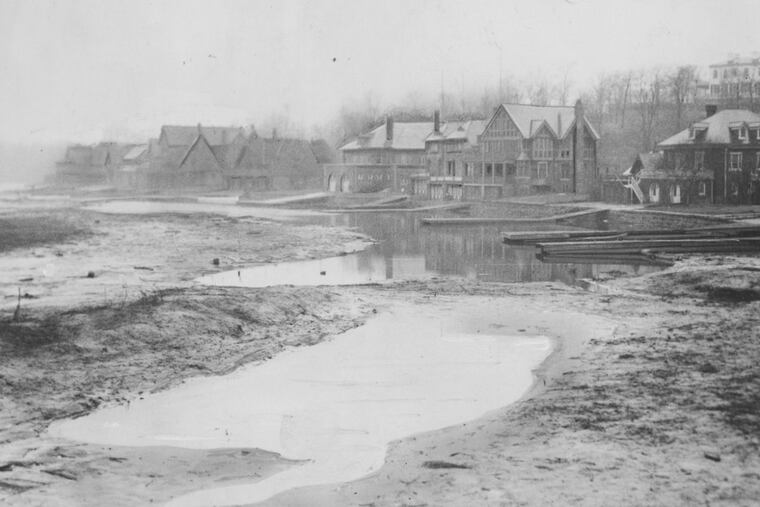Dredge the Schuylkill, or risk the lights on Boathouse Row going dark | Opinion
The Schuylkill is threatened by the accumulation of silt, which is filling the river, making passage along Boathouse Row hazardous and potentially degrading the racing conditions.

When the Eagles host — and beat — the Raiders on Monday Night Football on Christmas Day, during breaks in the action on the field, ESPN will treat the national audience to iconic images of Philadelphia — Independence Hall, perhaps an aerial view of the Comcast Towers now soaring over Billy Penn. There will almost certainly be a view of the Boathouse Row lights shining brightly across the Schuylkill.
However, this time next year, those Boathouse lights may be dark. The world-famous Row is threatened by the accumulation of silt, which is filling the river, making passage along Boathouse Row hazardous and potentially degrading the racing conditions in some lanes of the national racecourse. Without rowing, there will be no Boathouse Row as we know it.
How can this happen? More correctly, how can this happen again?
Before the Depression, Philadelphia regularly dredged the river to keep it free of coal waste and other sediments flowing down from the headwaters of the Schuylkill. The lack of municipal resources in the Depression ended dredging and that ended much of the rowing at that time. Vesper Boat Club, home of rowing Olympians, was largely a cycling club in the late 1930s.
Coal mining remediation funding provided relief in the 1950s. However, by 1990 the river was again in poor condition and the commonwealth once more tapped coal mining remediation funds to dredge Boathouse Row, although little of the sediment was coal by then. Agriculture activity and rapid suburban development of the Schuylkill watershed produced more runoff and sediment such that dredging was required again by 2000. By that time, Congress had amended the Rivers and Harbors Act to make the U.S. Army Corps of Engineers responsible for maintaining the depth of the water behind the Fairmount Dam up to East Falls at a depth of six feet. A "congressional earmark" provided the Corps of Engineers the funding they needed to do the job.
Today, the depth off the docks of Boathouse Row is less than one foot, rendering launching boats difficult and navigating along the Row hazardous. As critical, the national racecourse, which runs from just above the Strawberry Mansion Bridge to the Columbia Railroad Bridge, has not been maintained since the 1954 dredging and Lanes 1 and 6 need to be deepened to ensure fair competition in the numerous national regattas — Dad Vail, Stotesbury Cup and Independence Day Regatta among them. All of these regattas — rowing and dragon boat paddling — pump millions of dollars into the local economy.
The Schuylkill Navy, the nation's oldest amateur athletic association and the governing body for Boathouse Row and Schuylkill rowing, has been working, with city and congressional support, to get the river dredged. The U.S. Army Corps of Engineers' Philadelphia District has been a strong proponent of restoring safe and fair access to the river at Boathouse Row and the national course.
In the last two years, the Philadelphia office succeeded in getting the North Atlantic Division of the Corps to endorse their recommendation — only to have the Corps headquarters shelve the project. Ignoring the explicit congressional mandate to maintain this area of the Schuylkill, the headquarters claims there is no commercial value to restoring this section. But the Corps assesses commercial value purely in terms of tonnage of shipping. The Delaware River gets dredging funding, as it must; Boathouse Row and the racecourse do not.
Unless Philadelphia is content to have Boathouse Row go dark, it must make its collective voice heard by telling the secretary of the Army that we expect the Corps to honor the congressional mandate to restore safe and fair access to the river without further delay.
Paul Laskow is chair of the Schuylkill Navy River Restoration Committee. pjlaskow@gmail.com